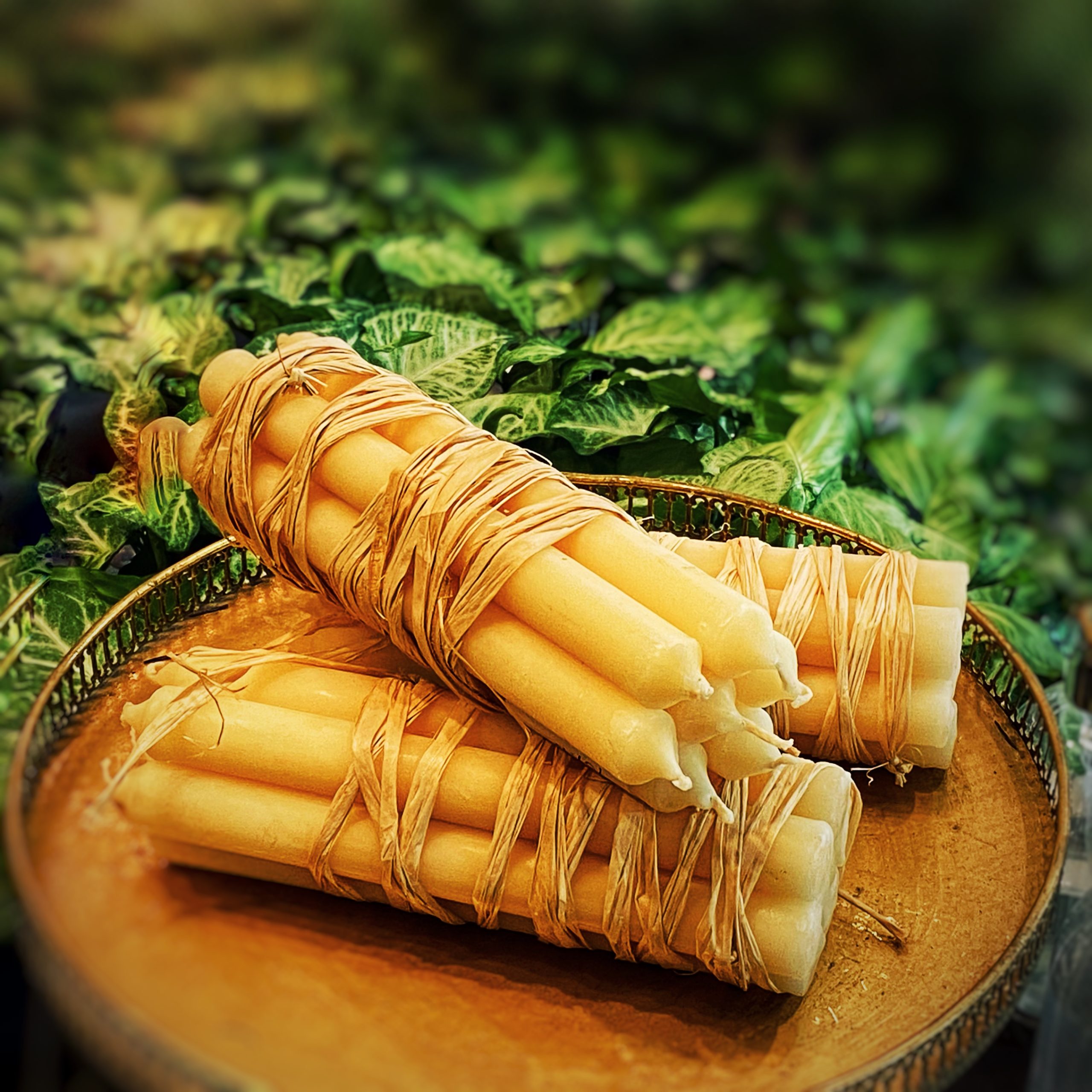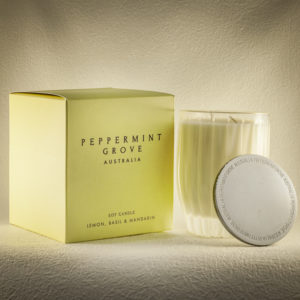Description
Our beeswax candles are fully Australian and chemical free. Beeswax is made by worker bees. It is secreted from glands situated on the underside of the abdomen, and moulded into the honeycomb that is used as storage space for honey and pollen, and as brood chambers for larval bees. Bees that build the comb gorge themselves on honey and hang together in clusters or chains across the area that is to be built up. After about 24 hours, they produce a drop of liquid wax. It soon hardens into a small white flake, which the bee moves to its mandibles where it is mixed with glandular secretions and chewed. The softened flake of wax is passed along to another worker who will mould it into shape and place it on the growing comb. It takes about four minutes to process a single flake from secretion to comb. The rich colour of beeswax is a result of the floral sources the bees forage on. Beeswax is almost pure white when first secreted, but gets its colour from the pollen and propolis the bees gather. The natural variations in colour range from almost white to almost black. Beekeepers obtain beeswax from the “capping” of the honeycomb – the part of the comb that seals in the honey collected by the bees Capping’s are sliced off the comb to harvest the honey and are then melted to separate honey from the wax. About one to two pounds of wax is produced for every hundred pounds of honey. Conditioning can vary: in pellets (like paraffin), in slabs or as wax sheets, with a flat or honeycomb design. Select the form you like best or the most adapted to the kind of candle you are planning to make. Beeswax is often used in combination with paraffin (a traditional proportion is one part beeswax for 3 parts paraffin), for a container candle formula for instance. Used alone, beeswax should not be used for any applications that involve a mould (wax and mould would become instantly inseparable!), unless you choose for latex moulds you can “peel off” the candle once the wax has cooled off. Beeswax does not expand and contract according to the temperature as paraffin does, yet another reason not to use it in a rigid mould (the contraction of paraffin when it cools off helps unmould the finished candle but this behaviour can become an inconvenience with specific types of candles, like container candles). Beeswax sheets can be used to create superb candles, easy to make and safe for the young candle makers, when rolled around a wick, to form a cylindrical or conic taper or pillar. The melting point of beeswax is situated between 62 and 65°C. This is quite high and can lead to some wicking problems: sometimes the heat produced but the burning wick is not sufficient to create a full melt pool. Worse, the flame can even bore a hole in the middle of the candle (also called a “tunnel”) and leave the remains of the candle intact. For this reason, and especially when beeswax is used to make a container candle, it is recommended to blend it with paraffin with a relatively low melt point (125°F is ideal) in order to lower the average melting point. It may prove necessary to use a wick one size (or two) up. In general, a beeswax candle will require a thicker wick than a paraffin candle of equal diameter. More History on Beeswax Beeswax candles were originally used by ancient Romans and Egyptians circa 300bc. Beeswax candles produce negative ions that capture and neutralise dust, cigarette smoke and toxins gently cleansing and purifying the air. The honeybee needs to visit millions of flowers, fly thousands of kilometers and ingest approximately 7 Kg of honey to make 1 Kg of wax. Beeswax candles burn slower than regular wax candles and are virtually smokeless. Beeswax candles are the only candles that help reduce the effects of asthma, hay fever and chemical sensitivities and have been known to benefit people with sleep or concentration disorders. Burning beeswax candles reduces the effects of electrical radiation from computers, television and other electrical equipment





